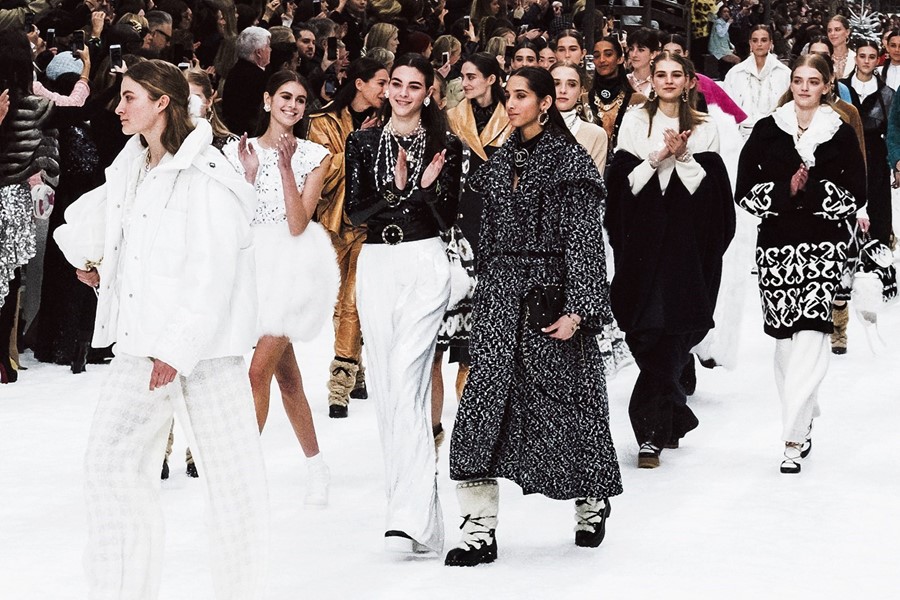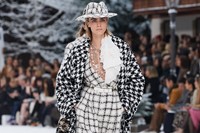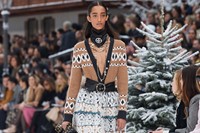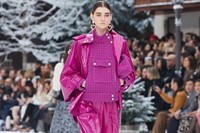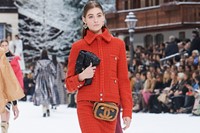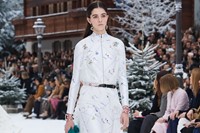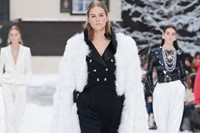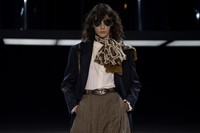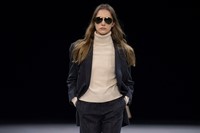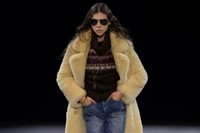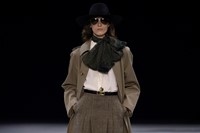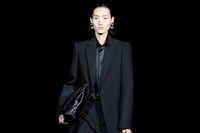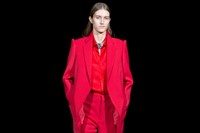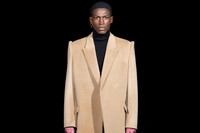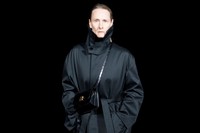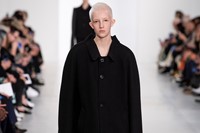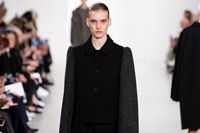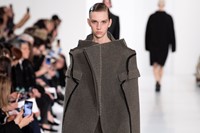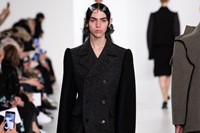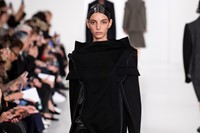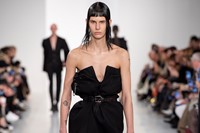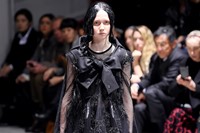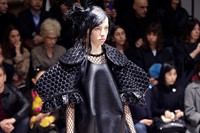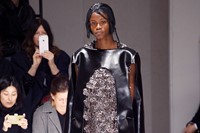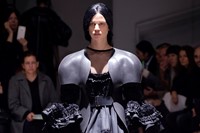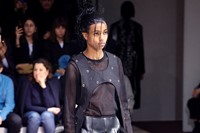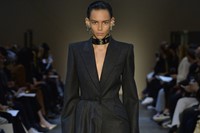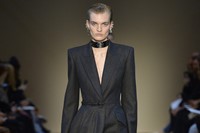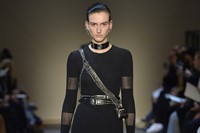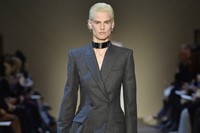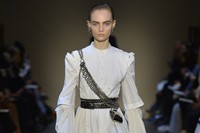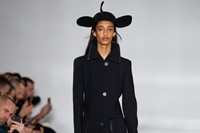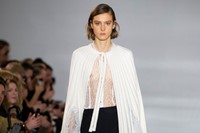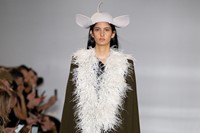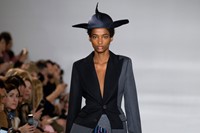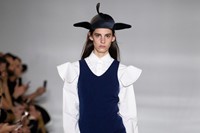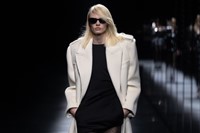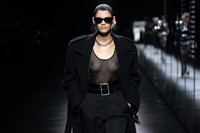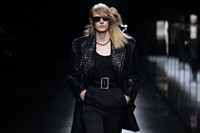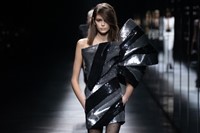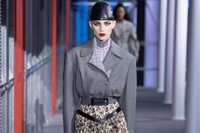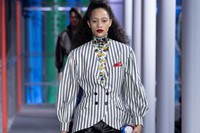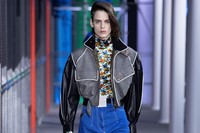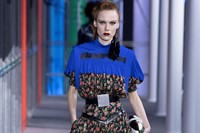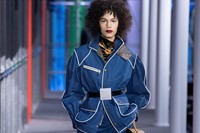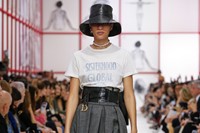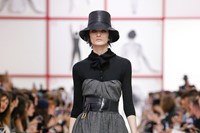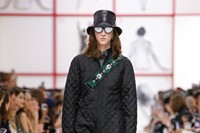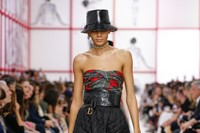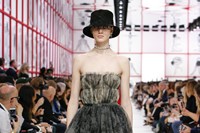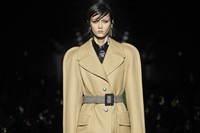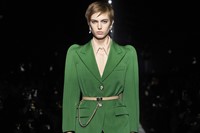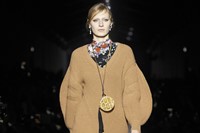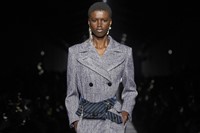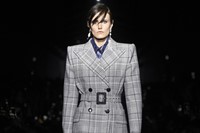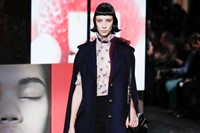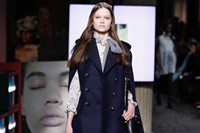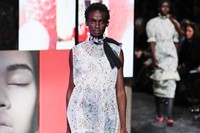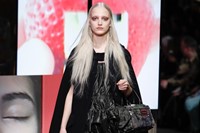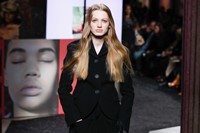As fashion month draws to a close, all the highlights from Paris, and the final week of shows
Chanel
A chocolate-box Alpine village set the scene for a poignant Chanel show, which would mark the late Karl Lagerfeld’s final collection for the house. Many of the designer’s family of women walked – among them Mariacarla Boscono, Kaia Gerber, Vittoria Ceretti and actor Pénelope Cruz – in a collection which represented a luxuriant take on skiwear, reflecting Gabrielle Chanel’s own love of sport. In tribute to Lagerfeld, the audience stood for the emotional finale, set to David Bowie’s Heroes.
Celine
Hedi Slimane’s sophomore collection for Celine marked an about turn: gone was the dishevelled after-dark glamour of his first collection (and previously, his work at Saint Laurent), replaced with a perfectly executed riff on the dress codes of the Parisian bourgeoisie during the 1970s. Recalling the signatures of Céline Vipiana’s original, then-accented Céline, there were knee-length checked wool skirts and culottes, ladylike pussybow blouses, knotted silk scarves and horse-bit leather belts. Each, in their evocation of polite Saint Germain style, was entirely convincing, demonstrating Slimane’s ability to straddle past and future at once.
Balenciaga
A runway of freshly poured asphalt set the tone for a collection Demna Gvasalia deemed his imagining of “the street”: though typical streetwear influences – trainers, hoodies, slogan T-shirts and the like, which have appeared in previous collections – were largely absent, traded for linear tailoring and perfectly cut outerwear. The trick here was in the silhouette – jackets were hunched on the shoulder or had high “incognito” collars which obscured the face; knitwear and bodysuits had sculptural hooped necklines. A more relaxed silhouette came courtesy of belted silk macs, ribbed-knit two-sets and pyjama-style kimonos in velour.
Maison Margiela
Tchaikovsky’s Swan Lake played as Finn Buchanan opened Maison Margiela’s A/W19 show (further references to the 19th-century ballet came courtesy of Black Swan-esque eye make-up, and feathers decorating hair and necklines). A restrained first section – prioritising grey, black and beige coats, suiting and knitwear, often belted, spliced and padded in typical Margiela fashion – preceded vivid graphic prints appearing on boots, leggings and dresses. Creative director John Galliano called the collection of genderless garments “a purified sense of restraint” and intended it as a stripping back for today’s “computer-generated culture”.
Comme des Garçons
Rei Kawakubo deemed her latest show for Comme Des Garçons “a gathering of shadows” – “many small shadows come together to make one powerful thing,” she explained. The atmosphere was apocalyptic – a blaring soundscape was provided by London-based artist and DJ Parma Ham, alluding to ecological collapse and the rise of militarism – and Kawakubo’s woman wore black, whether in Victoriana velvet hooped skirts and fishnet tights, cocooning leather jackets, peaked hoods or bulbous constructions which sat on the hips or shoulders like armour. To close, Kawakubo’s ‘shadows’ gathered in a circle like a witches’ coven, making for a powerful and suggestive spectacle of womanhood.
Alexander McQueen
Sarah Burton travelled northwards for her A/W19 collection for McQueen: to Macclesfield, close to Manchester, where she was born and raised. The area remains at the heart of the British textile industry and the region’s mills – which still provide much of the fabric for top-end men’s tailoring – provided the inspiration for the collection. Sharp, masculine tailoring was left with the fabric’s “Made in England” selvedge on show; later in the collection, Burton created a gown embellished with metal sequins in the shape of a loom’s heddle. A rose motif ran alongside, culminating in spectacular red gown – worn by AnOther cover star Anok Yai – where swirls of taffeta recalled buds in full bloom.
Loewe
16th-, 17th- and 18th-century miniatures – the selfies of the day, according to Jonathan Anderson – decorated an otherwise sparse Loewe showspace. The designer was fascinated by their ability, even when in a gallery with larger, more dramatic works, to draw the eye. He attempted the same with his clothing, stripping back the usual fashion show to a series of near-perfect, essential pieces – a tailored coat, a cotton blouse, a shirt dress – each designed to make the same first impression as the tiny portraits on the walls. But reduction did not mean minimalism: sprays of coloured feathers, shimmering tinsel, hundreds of pearls and folds of broderie anglaise ensured an impactful – and beautiful – A/W19 collection.
Saint Laurent
A series of coats opened Anthony Vaccarello’s latest: wide-shouldered, belted and impossibly glamorous, in grey herringbone, ivory wool or mock-croc leather, and inspired by Yves Saint Laurent muses Catherine Deneuve and Betty Caroux (the power-shoulder tuxedo tailoring which followed was also inspired by the duo). A series of Vaccarello’s trademark barely-there party dresses closed out proceedings: whether protruding with supersized bows, feathers or tulle.
Louis Vuitton
Within the Louvre’s Cour Carrée, Louis Vuitton transplanted another of Paris’ cultural institutions: the Centre Pompidou. The set for Louis Vuitton A/W19 was designed to replicate the primary-coloured pipes and metalwork of the 1970s structure, creating a museum-within-a-museum. Nicolas Ghesquière’s collection for the storied French house was a nod to the “different tribes” that have gathered in the last 40 years in and around the Centre Pompidou. The design codes that Ghesquière has put in place since his debut at Louis Vuitton in 2014 – encompassing the house’s heritage and an unequivocal futuristic, sci-fi bent – were on show in this A/W19 collection, which riffed on the 1980s with ruffled florals, clashing leopard prints, creepers, and checkerboard leather.
Dior
A preview of the V&A’s Christian Dior: Designer of Dreams set current creative director of the house, Maria Grazia Chiuri, thinking about the couturier’s links with Britain – at the heart of the exhibition is a gown he created for Princess Margaret’s 21st birthday party. Channelling the party-loving princess’ rebellious spirit, Chiuri looked also to the Teddy Girls of the same post-war period, known for their idiosyncratic combination of Edwardian frock coats and jeans; here, they were referenced in tartan skirts, kitten heels and Chiuri’s masculine take on Dior’s bar jacket, in denim. Chiuri’s feminist slogan T-shirts also made a return, this time, they read “Sisterhood is Global”, taken from the work of American poet Robin Morgan.
Givenchy
On Sunday, with gay Twitter still reeling from Rachel Weisz’s latex Givenchy moment at the Oscars the week before, Clare Waight Keller presented her A/W19 offering for the house. This collection represented a continuation of the seduction of Weisz’s look: strong, sculptural 40s-style tailoring (a forte of Waight Keller’s Givenchy) and pleasing, plissé floral print dresses inspired by Japanese vases. The whole show was imbued with the sense of dark, decadent glamour that is coming to define the English designer’s tenure at the French house.
Miu Miu
Girlhood lay at the heart of Miu Miu A/W19. Dyed black hair and septum piercings delivered a sense of teenage angst – or perhaps even 00s emo – while videos by Sharna Osborne, played on the televisions which made up the set, showed fractured images of Disney toys and Dolly Parton. Black tights and camo added to the emo feel, flowers and glitter softened it, and shearling and velvet luxuriated it, for a collection encompassing the offbeat femininity that we know and love Miu Miu for.
